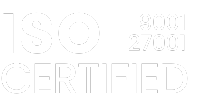A superhero who’s not actually saving anyone.
Could this be the fastest way to explain what greenwashing is?
A company that says it’s “net zero”, “clean”, and has “lowest emissions” with no substantial ground is a hero. A hero that pretends to save us, but isn’t actually doing anything.
Greenwashing can be hard to spot.
Take Ryanair’s campaign that made a lot of noise in the news back in 2021. Released in 2019, Ryanair launched a campaign that promoted the airline as “Europe’s lowest fares, and lowest CO2 emissions”. The Advertising Standards Agency in the UK quickly banned the campaign, stating that the ads were misleading. Moreover, the data Ryanair used to validate their claims dates from 8 years earlier. Quite disappointing, isn’t it?
Four years after the launch of that campaign, Ryanair is still ranked the number one polluting airline, with a 23% CO2 emission growth compared to 2019.
But Ryanair isn’t the only company guilty of this. More than half of consumers worldwide report being misled. Whether that’s unverified labels, vague claims, or misleading imagery, greenwashing exposes your company to significant risks, including:
- Loss of consumer trust
- Significant fines and legal issues
- Risk of investor divestment
The customer demand is growing
Despite living in the global greenwashing epidemic, the consumers remain hopeful. Research shows that more than a third of global consumers are willing to pay extra for sustainable products and services. Products featuring ESG* claims grow faster, and with US consumers alone spending over $14 trillion annually, there is a strong demand for eco-friendly and ethical products, giving businesses great power to drive sustainability and shape a greener future. But how do you do that – without over-promising and “greenwashing” your consumer? Here are some of the sustainable business practices you can consider:
Assess the current state of your business
To reduce overwhelm, consider starting with just one metric, and expand when you’re ready. Product Carbon Footprint (PCF) can be a great option to tackle multiple sustainability goals, understand your performance, stand out from the competition, and more. Read more about it in our recent article.
Be specific
The McKinsey study shows that consumers are willing to pay more for products displaying ESG (environmental, social, and governance) claims. By quantifying your impact (reduced carbon emissions, water usage), you can justify any potential price premium. Define your specific ESG focus areas and track progress on metrics that matter to your customers. Product Carbon Footprint (PCF) that we mentioned earlier is often included in the ESG framework, with an ESG being a broader assessment of your overall company performance.
Find the right partners
Show your actions towards reducing your environmental footprint, i.e. by partnering with suppliers with lower emissions.
Get expert advice
We gave some examples of companies that can offer support in our recent article.
Be transparent about your results
Greenwashing and lack of clear data about the organization’s environmental impact can discourage financial partners from investing. Ecochain Mobius helps you create accurate carbon footprint reports and share them with stakeholders.
Remember our superhero analogy from the beginning? Do the work and “save the world”, don’t just say you are. Measure your environmental impact and prioritize concrete steps. This will earn the trust of customers and investors, driving real progress across your industry.
→ Read related articles: Why Executives Are Embracing Sustainability for Business Growth
*ESG – ESG stands for Environmental, Social, and Governance. It’s a way to evaluate how a company is becoming better: for the environment and its people.


